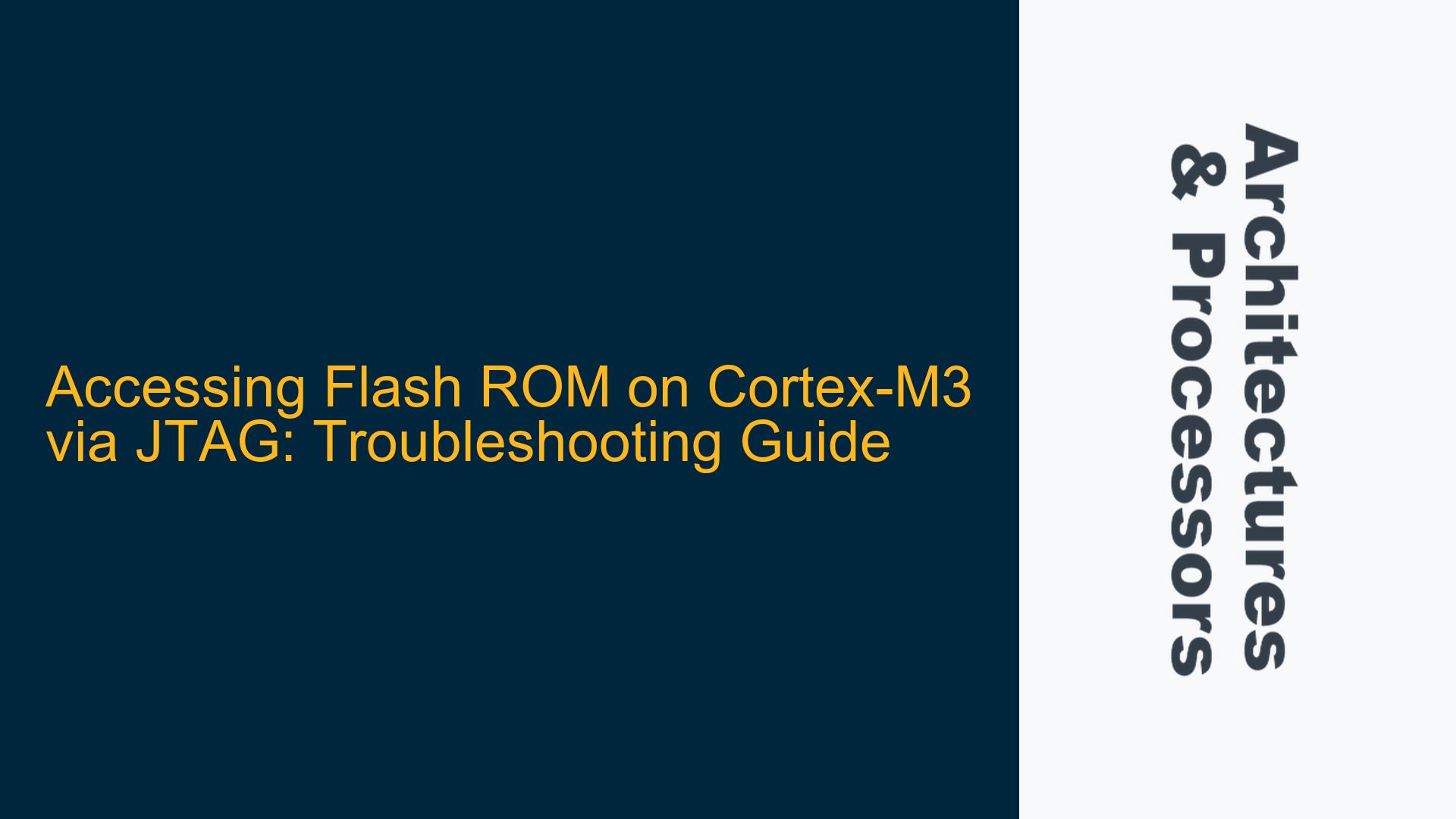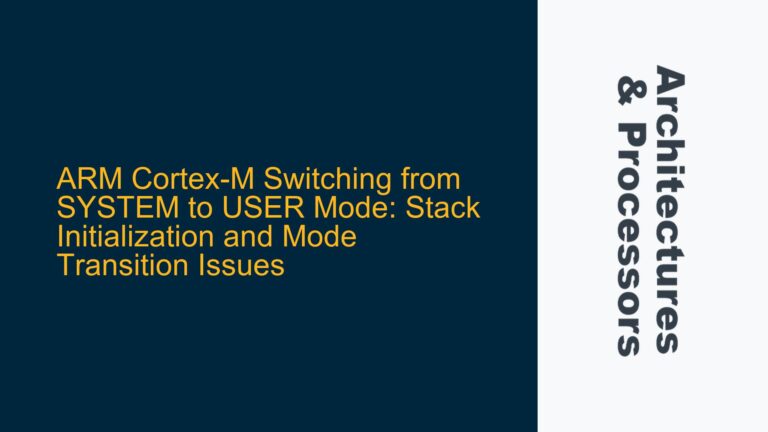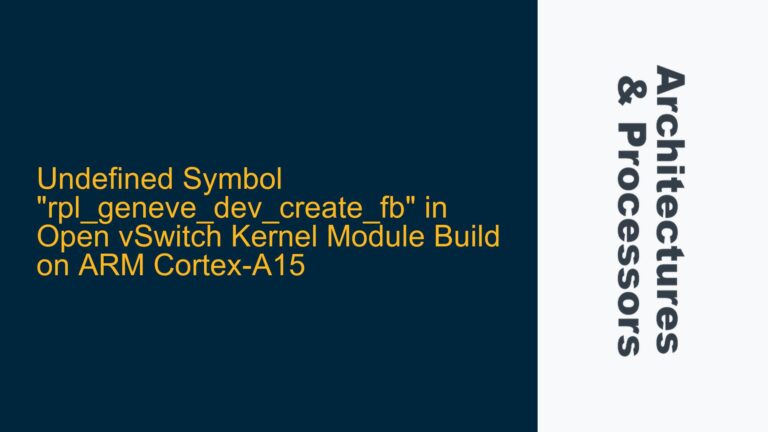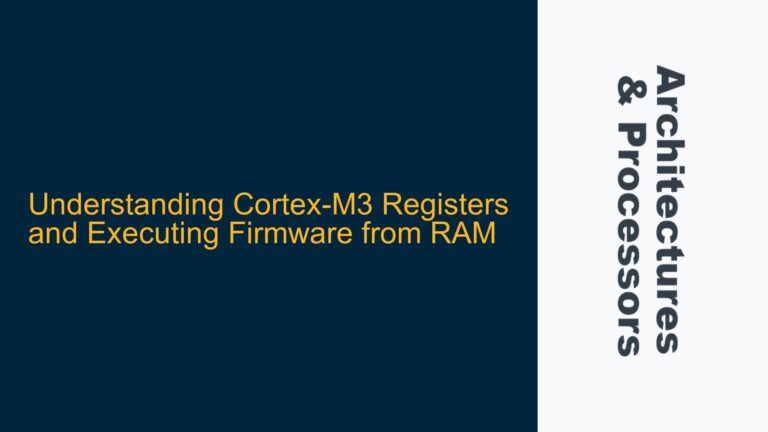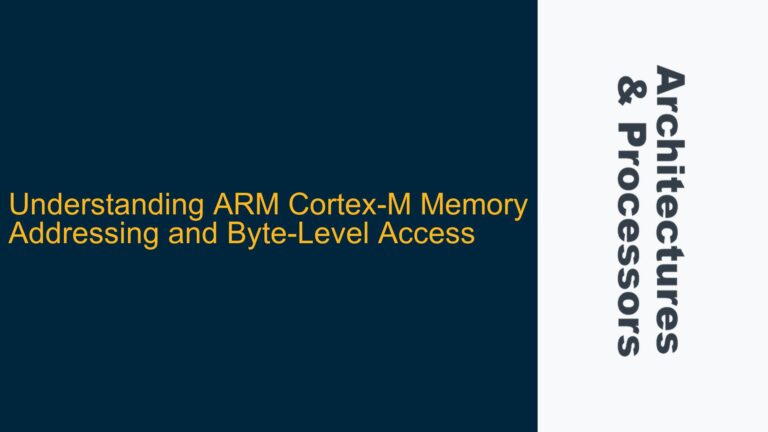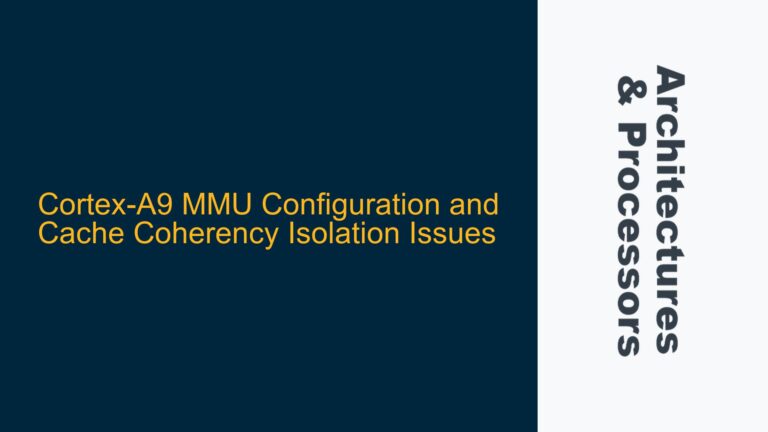Cortex-M3 Flash ROM Access Issues via JTAG Interface
When working with the ARM Cortex-M3 design kit, accessing the Flash ROM via the JTAG interface can present several challenges. The JTAG interface is a critical tool for debugging and programming embedded systems, but improper configuration or misunderstandings of the hardware-software interface can lead to failures in accessing the Flash ROM. This issue is particularly common when developers attempt to simulate or debug Flash memory operations without a clear understanding of the Cortex-M3 memory architecture, JTAG protocol, or Flash programming sequences.
The Cortex-M3 processor integrates a Flash memory controller that manages read, write, and erase operations. Accessing the Flash ROM via JTAG requires precise coordination between the debug probe, the JTAG interface, and the Flash memory controller. Common symptoms of this issue include the inability to read or write Flash memory, unexpected behavior during Flash programming, or complete failure to establish a JTAG connection.
To address this issue, it is essential to understand the underlying causes, which can range from incorrect JTAG signal routing to misconfigured Flash memory controller settings. Additionally, the Cortex-M3’s memory protection unit (MPU) and debug access port (DAP) configurations can interfere with JTAG-based Flash access if not properly initialized.
JTAG Signal Integrity and Flash Memory Controller Configuration
One of the primary causes of Flash ROM access issues via JTAG is poor JTAG signal integrity. The JTAG interface relies on four primary signals: TDI (Test Data In), TDO (Test Data Out), TCK (Test Clock), and TMS (Test Mode Select). Any degradation in these signals, such as noise, signal reflections, or improper termination, can disrupt communication between the debug probe and the Cortex-M3 processor. Signal integrity issues are particularly problematic when working with high-speed JTAG clocks or long trace lengths on the PCB.
Another common cause is misconfiguration of the Flash memory controller. The Cortex-M3’s Flash memory controller has specific timing requirements for read, write, and erase operations. If the JTAG interface attempts to access the Flash memory without adhering to these timing constraints, the operation will fail. Additionally, the Flash memory controller may require specific initialization sequences or register configurations before it can be accessed via JTAG. For example, the Flash access control register (FLASH_ACR) must be configured to set the correct latency and prefetch settings.
The Cortex-M3’s memory protection unit (MPU) can also prevent JTAG access to the Flash ROM. The MPU is designed to enforce memory access permissions, and if it is configured to restrict access to the Flash memory region, JTAG-based operations will fail. Similarly, the debug access port (DAP) must be properly configured to allow JTAG access to the Flash memory. The DAP configuration includes setting the appropriate access permissions and enabling the necessary debug features.
Verifying JTAG Signal Integrity and Configuring Flash Memory Controller
To troubleshoot and resolve Flash ROM access issues via JTAG, follow these detailed steps:
Step 1: Verify JTAG Signal Integrity
Begin by inspecting the physical JTAG connections on the PCB. Ensure that the TDI, TDO, TCK, and TMS signals are properly routed and terminated. Use an oscilloscope to measure the signal integrity of each JTAG signal. Look for signs of noise, signal reflections, or improper voltage levels. If signal integrity issues are detected, consider reducing the JTAG clock speed, adding series termination resistors, or shortening the trace lengths.
Step 2: Configure the Flash Memory Controller
Access the Cortex-M3’s Flash memory controller registers via the JTAG interface. Verify that the FLASH_ACR register is configured correctly for the system clock frequency and Flash memory timing requirements. Set the appropriate latency and prefetch settings to ensure reliable Flash access. Additionally, check the Flash key register (FLASH_KEYR) to ensure that the Flash memory controller is unlocked and ready for programming.
Step 3: Initialize the Memory Protection Unit (MPU) and Debug Access Port (DAP)
Review the MPU configuration to ensure that the Flash memory region is accessible via JTAG. If necessary, modify the MPU region attributes to allow read and write access to the Flash memory. Next, configure the DAP to enable JTAG access to the Flash memory. This includes setting the appropriate access permissions and enabling the necessary debug features, such as the Debug Exception and Monitor Control Register (DEMCR).
Step 4: Perform a Flash Memory Access Test
Once the JTAG signal integrity, Flash memory controller, MPU, and DAP configurations have been verified, perform a test access to the Flash memory. Use the JTAG interface to read a known value from the Flash memory, such as the device ID or a specific memory location. If the read operation is successful, proceed to write and erase operations to further validate the Flash memory access.
Step 5: Debugging and Logging
If the Flash memory access test fails, enable debugging and logging features to capture detailed information about the JTAG transactions and Flash memory controller operations. Use the Cortex-M3’s Embedded Trace Macrocell (ETM) or Instrumentation Trace Macrocell (ITM) to trace the execution flow and identify any errors or exceptions that occur during the Flash access operations.
By following these steps, you can systematically troubleshoot and resolve Flash ROM access issues via JTAG on the Cortex-M3 design kit. Proper configuration of the JTAG interface, Flash memory controller, MPU, and DAP is essential for reliable Flash memory operations. Additionally, verifying signal integrity and performing thorough testing will help ensure successful Flash memory access and programming.
